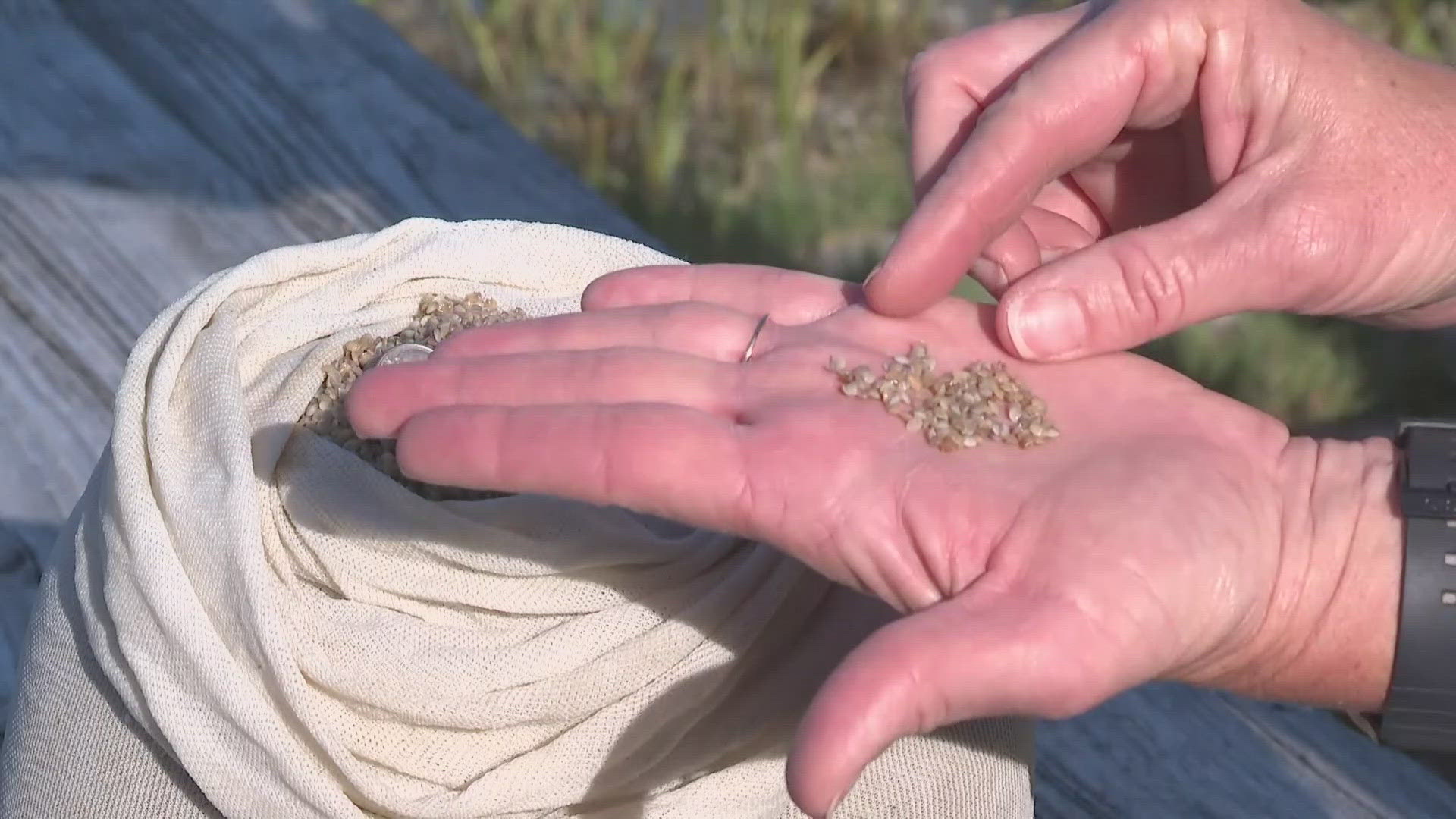ST. JOHNS COUNTY, Fla — Clams have been described as the “liver of the river” because of their filtering capabilities.
A team on the First Coast is making it their mission to help restore two rivers in Florida -- with the power of clams.
And they are taking their efforts to a higher level.
A clam farmer, a scientist and a drone pilot have joined forces to study, spawn and drop clams into the Matanzas River in St. Johns County and the Indian River Lagoon in Central Florida.
Their secret weapons are two-millimeter-long baby clams and a patent-pending drone.
"We’re under threat with poor water quality," said Dr. Todd Osborne. He is a biochemistry professor and researcher with the University of Florida Whitney Marine Laboratory in Flagler County.
Two years ago, Osborne and clam farmer Mike Sullivan teamed up to pour clam larvae, cup by cup, into the Matanzas River near Crescent Beach in St. Johns County.
Now they’ve advanced their operation with a drone that drops tiny clams by the thousands into the river.
Clams act like filters. "They clean water. They take particles out of the water and that’s a great thing for our waterways and keep them healthy," Osborne noted.
A cleaner waterway "helps everybody," Sullivan said. "It helps the economy because it creates jobs. It promotes tourism."
Sullivan has a shellfish hatchery in Crescent Beach, next to his restaurant, Commander's Shellfish Camp.
And he knows what happens when a river goes bad. he used to supply clams, from his central Florida farm, to Disney resorts. However, his whole clam farm in New Smyrna in the Indian River Lagoon got wiped out in 2011 to 2013 by brown tide.
"But there were survivors, and we found those and that’s what we bred to get these," Sullivan said.
He restarted in St. Johns County and those survivors he brought with him are called super clams.
Now Sullivan breeds millions of them to sell to farmers and to restore riverways. Millions of his baby clams are being dropped by drone in this project.
The project involves drone pilot, Earnest Hale. His drone can carry 50 pounds of clams at a time. He engineered a drone attachment that keeps the clams wet and then carefully drops them.
“The key to the whole operation is that the clams themselves can’t dry out. These guys can’t get dry or they’re not going to survive," Osborne explained.
It’s hard to see the drones actually fall from the drone because they are so tiny.
Why drop clams from a drone?
"If we put them out in a very dispersed pattern," Osborne said, "then the predators really have to work to get at each one of those. So the theory is that it’s going to increase the likelihood of survival.”
Survival of the clams can give the rivers a better chance of overcoming human population growth along its banks.
So this special ops team is dropping millions of baby clams in the Indian River Lagoon in central Florida, where Sullivan had to leave, as well as in the fairly healthy Matanzas River.
“We’re trying to be a little proactive here in St. Johns County and northeast Florida really," Osborne said.
"To better clams," Sullivan smiled after a million were dropped one May morning into the Matanzas River. "And more clams! Billions of them!"

